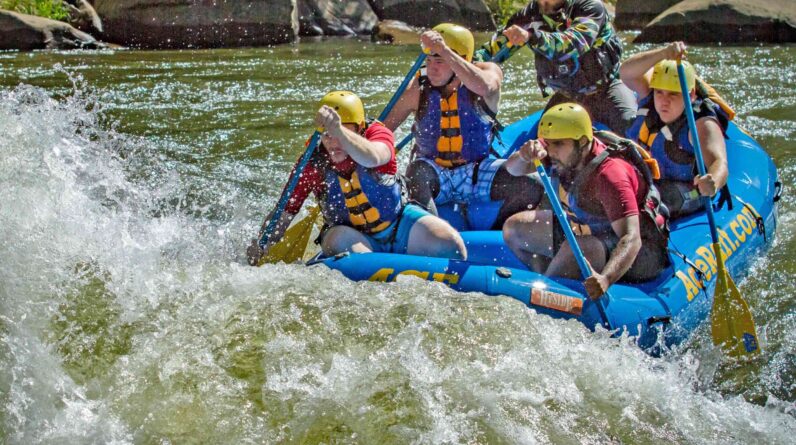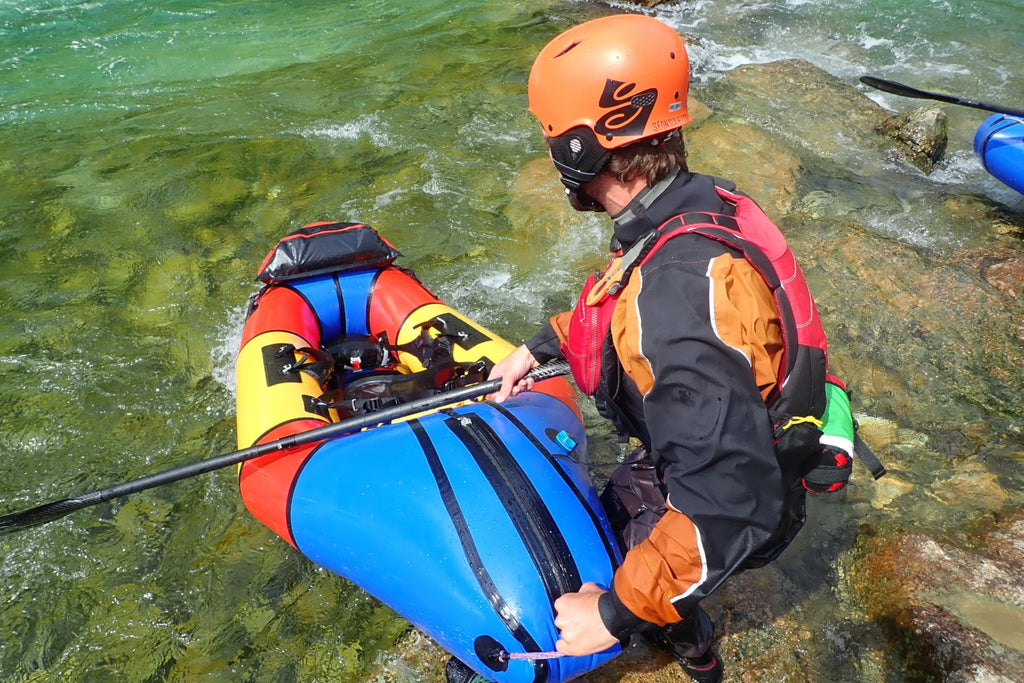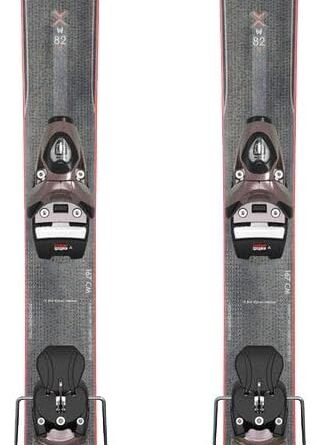
Get ready to conquer the thrilling rapids with the essential safety gear for whitewater rafting! When it comes to this adventurous water sport, safety should always be a top priority. Before setting off on your exhilarating river expedition, make sure you are equipped with the necessary gear that will keep you safe and secure throughout your journey. From a well-fitted helmet to a sturdy personal flotation device, this article will guide you through the must-have safety gear you need to enjoy every moment of your whitewater rafting adventure.

This image is property of paddlecamp.com.
Helmet
Purpose of a helmet
A helmet is an essential piece of safety gear for whitewater rafting. Its primary purpose is to protect your head from potential impacts with rocks, branches, or other hard surfaces in the event of a fall or collision. Wearing a helmet significantly reduces the risk of head injuries, such as concussions, skull fractures, or brain trauma. It acts as a protective barrier, absorbing the impact and distributing the force evenly.
Types of helmets
There are various types of helmets available for whitewater rafting, each designed to meet different needs and preferences. The most common types include:
-
Hardshell Helmet: These helmets have a durable outer shell made of polycarbonate or ABS plastic, offering excellent impact protection. They often feature an adjustable suspension system for a secure and comfortable fit.
-
Softshell Helmet: Softshell helmets are made from foam material, providing a lightweight and comfortable option. They are designed to withstand multiple impacts and mold to the shape of your head for a customized fit.
-
Full-Face Helmet: As the name suggests, full-face helmets provide additional protection for your face and lower jaw. They are ideal for more extreme whitewater activities or when navigating narrow channels with high chances of submerged obstacles.
Features to look for
When choosing a helmet, there are several features to consider to ensure maximum safety and comfort:
-
Proper Fit: It is crucial to select a helmet that fits snugly on your head without being too tight or loose. Look for adjustable straps and padding that allow you to customize the fit according to your head size.
-
Certification: Check if the helmet meets safety standards, such as those set by the American National Standards Institute (ANSI) or the International Canoe Federation (ICF). Look for certification labels to ensure the helmet offers adequate protection.
-
Ventilation: Whitewater rafting can be physically demanding, so it is essential to choose a helmet with proper ventilation to prevent overheating and discomfort during extended periods on the water.
-
Durability: Opt for helmets with a sturdy construction that can withstand the rigors of whitewater activities. Reinforced shells and impact-resistant materials will ensure your helmet remains intact in case of a collision.
-
Visibility: Consider helmets with bright colors or reflective elements to enhance visibility in case of an emergency or if you become separated from your group.
Personal Flotation Device (PFD)
Importance of a PFD
A Personal Flotation Device (PFD), also known as a life jacket, is a crucial piece of safety equipment for whitewater rafting. Its primary purpose is to keep you afloat and prevent drowning in the event of an accidental fall or capsize. A properly worn PFD can provide buoyancy and keep you safely above water, even in turbulent rapids. It is considered a lifesaving device and is required by law in most jurisdictions for all water activities.
Types of PFDs
There are several types of PFDs available, each designed for specific activities and water conditions. The most common types suitable for whitewater rafting include:
-
Type III PFD: Type III PFDs are commonly used for whitewater rafting. They offer a good balance between buoyancy and mobility, providing sufficient flotation without hindering movement. These PFDs are designed to keep your head above water even in swift currents.
-
Inflatable PFD: Inflatable PFDs are compact and lightweight, making them popular for recreational rafting. They are designed to be manually or automatically inflated upon immersion in water. However, it is important to note that inflatable PFDs may not be as reliable as inherently buoyant PFDs in rough whitewater conditions.
-
Rescue PFD: Rescue PFDs are specifically designed for whitewater rescue professionals or experienced paddlers who might need extra features like quick-release harnesses, tow systems, or additional floatation to assist in rescue operations. These PFDs offer increased functionality and versatility.
Choosing the right size and fit
To ensure your PFD functions effectively, it is crucial to choose the right size and ensure a proper fit. Here are some considerations:
-
Sizing: PFDs are available in various sizes based on weight ranges. Refer to the manufacturer’s guidelines to find the appropriate size for your body weight. It is important to try on the PFD and check that it fits properly before purchasing.
-
Buoyancy: The PFD should provide enough buoyancy to keep your head and upper body above water. Ensure that the PFD is properly rated to support your weight and the anticipated conditions during whitewater rafting.
-
Adjustability: Look for PFDs with adjustable straps and multiple points of adjustment to ensure a snug and secure fit. This allows you to customize the fit according to your body shape, ensuring maximum comfort and safety.
-
Mobility: Test the PFD’s mobility by moving your arms and shoulders while wearing it. It should not restrict your range of motion or feel too bulky, as this can hinder your ability to paddle effectively.
Remember, a properly maintained and regularly inspected PFD is essential for its optimal performance. Check for any signs of wear or damage before each trip, and consider replacing your PFD if it shows signs of deterioration.

This image is property of cdn.shopify.com.
Wetsuit or Drysuit
Protection against cold water
Whitewater rafting often involves navigating through cold-water environments, such as mountain rivers or glacial-fed rapids. Wearing appropriate insulation gear, such as a wetsuit or drysuit, is crucial to protect yourself from hypothermia or cold-related injuries.
Difference between wetsuit and drysuit
Both wetsuits and drysuits are designed to provide insulation, but they differ in their functionality and purpose.
-
Wetsuit: A wetsuit is made of neoprene, a synthetic rubber material that traps a thin layer of water between the suit and your body. This water gets heated by your body, creating an insulating barrier that keeps you warm. A wetsuit is suitable for mild to moderate cold-water conditions and provides flexibility, allowing for a wide range of motion.
-
Drysuit: Unlike a wetsuit, a drysuit is designed to keep you completely dry by preventing water from entering. It is typically made of a waterproof and breathable material, such as Gore-Tex. A drysuit is ideal for colder and more extreme conditions, as it offers superior insulation and protection against the elements.
Factors to consider while choosing
When selecting the appropriate insulation gear for your whitewater rafting adventures, consider the following factors:
-
Water Temperature: The water temperature will determine whether you need a wetsuit or a drysuit. Coldwater temperatures warrant the use of a drysuit for maximum protection, while milder conditions may only require a wetsuit. Be aware of the water temperature and choose accordingly.
-
Air Temperature: Consider the air temperature as well. If you are rafting in colder climates with low air temperatures, a drysuit may be more suitable to provide additional warmth and insulation.
-
Mobility: Evaluate the mobility and flexibility of the suit. While wetsuits generally offer better range of motion, some drysuits are designed with built-in gussets or articulated seams to allow for greater freedom of movement.
-
Durability: Whitewater rafting can be physically demanding and may involve contact with rocks and other rough surfaces. Choose a suit with sturdy construction and reinforced knees and elbows to withstand potential abrasions and prolong the lifespan of the garment.
-
Fit: Proper fit is crucial for both wetsuits and drysuits to ensure maximum insulation and comfort. The suit should fit snugly without being too tight or restrictive, allowing for easy movement and layering underneath if necessary. Try on different sizes and styles to find the best fit for your body shape.
Remember, regardless of the suit you choose, it is important to layer appropriately underneath for additional warmth. Choose synthetic or wool-based base layers that wick away moisture and avoid cotton, as it retains water and can make you feel colder.

This image is property of www.rowadventures.com.






